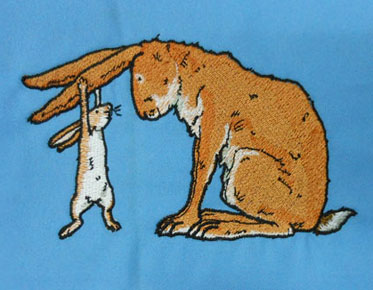Exploring the Mesmerizing World of Vector Art for Holography and Laser Art
The fusion of technology and art has opened up exciting possibilities in the realm of visual creativity. One such captivating avenue is vector art, which finds its perfect niche in the world of holography and laser art. In this blog, we'll embark on a journey into the dazzling world of vector art, exploring its applications, techniques, and the mesmerizing intersection with holography and laser art.
The Basics of Vector Art
Before we dive into the intriguing relationship between vector art and holography/laser art, let's get acquainted with the fundamentals of vector art.
Vector art, unlike raster images (which are pixel-based and resolution-dependent), is created using mathematical equations that define paths, points, curves, and shapes. These vectors are infinitely scalable, allowing for sharp and crisp images regardless of their size. Popular vector graphic software like Adobe Illustrator, CorelDRAW, and Inkscape are used to create vector artwork.
Vector Art in Holography
Holography, the art of creating 3D images from 2D surfaces, is a perfect match for vector art due to its precision and scalability. Here's how vector art is making waves in the holographic world:
1. Precision and Detail
Vector art's mathematical nature ensures unparalleled precision and detail, making it ideal for producing intricate holographic images. This precision allows for the creation of holograms that are visually stunning and virtually indistinguishable from reality.
2. Dynamic Holographic Displays
Vector art's scalability enables the creation of holographic displays that can adapt to various sizes and environments. Whether it's a small handheld holographic device or a large-scale exhibition, vector-based holography can deliver dynamic and captivating visual experiences.
3. Efficient Data Storage
Holographic data can be voluminous, especially for complex 3D scenes. Vector art's efficiency in data storage makes it possible to store holographic information compactly, ensuring that holographic displays run smoothly and without delays.
4. Interactive Holographic Installations
Imagine an art installation where viewers can interact with holographic scenes using gestures or touch-sensitive interfaces. Vector-based holography can make this dream a reality by enabling precise tracking and responsive animations, creating an immersive and engaging experience for art enthusiasts.
5. Holo-Portraits and Personalized Holograms
Vector art can be leveraged to create lifelike holographic portraits of individuals. These can be used for memorials, museums, or even futuristic family photo albums. Customized holograms could capture personal memories and moments in astonishing detail.
6. Medical and Scientific Visualization
In the field of medicine and science, vector art can help create holographic representations of complex biological structures or scientific phenomena. This can aid researchers and students in visualizing and understanding intricate subjects with unprecedented clarity.
Vector Art in Laser Art
Laser art, which involves the use of laser beams to create stunning visual displays, has also embraced vector art with open arms:
1. Precise Laser Control
Vector art provides precise control over laser movements and intensity, allowing artists to create intricate and delicate designs with laser beams. This precision can be seen in laser light shows, laser engraving, and laser-cut artwork.
2. Vibrant and Versatile
Vector-based laser art offers a wide range of color options and visual effects. By manipulating laser intensity and color, artists can produce vibrant and captivating displays, making laser art an ideal medium for live performances and installations.
3. Seamless Integration with Technology
Incorporating vector art into laser art seamlessly connects traditional artistic expressions with modern technology. This fusion results in innovative and dynamic visual experiences that captivate audiences and push the boundaries of what's possible in art.
4. Laser-Projected Vector Murals
Imagine cityscapes transformed by vector-based laser art. Artists can create intricate murals on the sides of buildings or other public spaces using lasers, allowing for dynamic and ever-changing urban art displays.
5. Laser-Engraved Vector Sculptures
Vector art can be used as the blueprint for laser-engraved sculptures, merging technology and traditional art forms. The precision of lasers can carve detailed 3D sculptures from various materials, resulting in visually striking and tactile artworks.
6. Vector-Driven Laser Light Shows
Live performances and events can benefit from vector-based laser art to create breathtaking light shows synchronized with music and motion. This concept can elevate concerts, festivals, and theater productions to a new level of sensory experience.
Cross-Applications:
Vector Art Augmented Reality (AR) Integration
Combining vector art with AR technology opens up a world of possibilities. Artists can use vector graphics as the foundation for interactive AR experiences that bridge the gap between the digital and physical worlds, enhancing storytelling and education.
Educational Resources
Vector art can be used to develop educational materials for understanding holography, laser technology, and vector graphics. This can help students and enthusiasts grasp complex concepts in an engaging and visually appealing manner.
Architectural Integration
Architects and designers can incorporate vector-based holographic and laser art into building designs. This includes creating holographic facades or laser-cut architectural elements that interact with natural light, weather, or viewer proximity.
In conclusion, the synergy between vector art, holography, and laser art presents an exciting frontier for artists, scientists, and technologists alike. As these fields continue to evolve, we can anticipate even more groundbreaking and awe-inspiring creations that push the boundaries of artistic expression and technological innovation. Whether it's through interactive installations, personalized holograms, or laser-projected murals, the future of art is undoubtedly bright, dynamic, and full of potential.



